Kakaako stands as a testament to urban transformation, evolving from Honolulu’s industrial backbone into what many consider Oahu’s most dynamic cultural heartbeat. This remarkable neighborhood, strategically positioned between downtown Honolulu and Ala Moana, has become an internationally recognized street art destination while maintaining deep roots in Hawaiian culture and community values. From world-class murals that span entire building facades to intimate gallery spaces showcasing Pacific contemporary art, Kakaako offers an unparalleled artistic experience that continues to evolve with each passing season.
Historical Foundation: From Industrial Past to Artistic Renaissance
The Cultural Transformation Story
Once home to ancient fish ponds, Kakaako is now Hawaii’s hub for stunning murals, trendy eateries, breweries, and boutique shopping. This transformation didn’t happen overnight but represents years of thoughtful community planning and cultural investment. The area’s industrial heritage, with its expansive walls and open spaces, provided the perfect canvas for large-scale artistic expression while honoring the land’s rich history.
The neighborhood’s artistic renaissance gained international attention through strategic partnerships between community organizations, property developers, and cultural institutions. This collaborative approach ensured that the area’s development would celebrate rather than erase its cultural significance, creating a model for culturally responsible urban development that other cities now study and emulate.
The POW! WOW! Hawaii Legacy
The POW! WOW! Hawaii festival deserves special recognition as the catalyst that transformed Kakaako into a global street art destination. POW! WOW! Hawaiʻi paints multiple murals throughout Our Kakaʻako, with talented artists working across nine blocks from Feb. 13-18, creating an annual celebration that brings together local and international artistic talent.
Although the event was scaled down in 2018, it still brought some 50 artists to participate, including serious creative heavyweights such as Toki Doki brand artist and co-founder Simone Legno, renowned New York-based artist Daniel Arsham and some of Hawaii’s highest-caliber muralists. This demonstrates the festival’s continued ability to attract world-class talent while maintaining its commitment to local artistic voices.
The festival’s impact extends beyond the week of painting. Artists reimagine 38 walls in public spaces throughout Kakaako—the gentrifying Honolulu commercial district sandwiched between Ala Moana shopping center to the east and downtown Honolulu fronting Honolulu Harbor to the west. This systematic approach to mural placement creates a cohesive artistic experience throughout the neighborhood.
The Mural Experience: A Walking Gallery of International and Local Talent
Iconic Murals and Their Stories
Each mural in Kakaako tells a story, whether celebrating Hawaiian cultural traditions, exploring contemporary social themes, or simply bringing joy through vibrant imagery. The diversity of artistic styles reflects the neighborhood’s commitment to inclusive cultural expression.
Kamea Hadar’s Cultural Portraits: As POW! WOW! Hawaii’s Co-Lead Director, Kamea Hadar has created some of the most recognizable murals in the district. His photorealistic portraits celebrate local faces and stories, creating powerful connections between art and community identity.
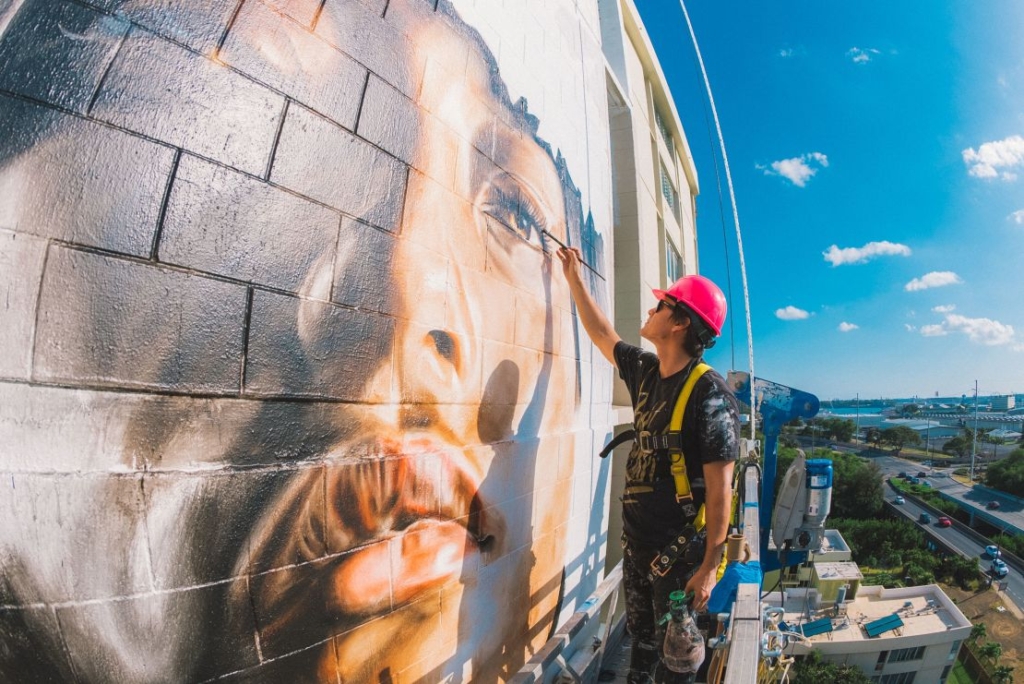
John “Prime” Hina’s Cultural Narratives: Prime’s mural near Highway Inn facing Coral Street at SALT at Our Kakaʻako represents the intersection of traditional Hawaiian storytelling and contemporary artistic expression. His work often incorporates elements of Hawaiian mythology and cultural symbols.
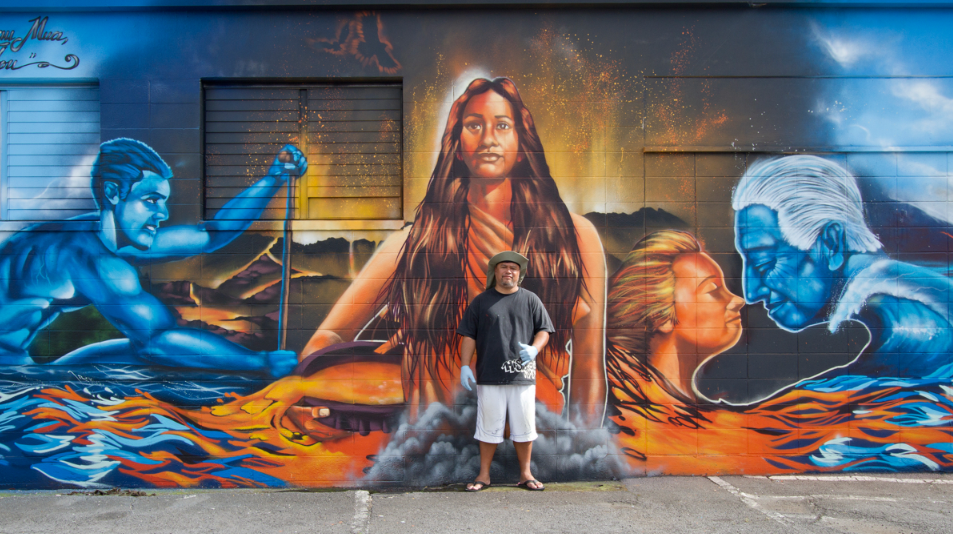
Tristan Eaton’s Signature Style: Located on Cooke and Halekauwila Street, Eaton’s mural has become one of the neighborhood’s most photographed artworks. His distinctive style combines pop art sensibilities with cultural sensitivity, creating pieces that resonate with both local residents and international visitors.

Local Artists Making Their Mark
Local artists set to take part in Honolulu’s ultimate street-art project include Melody Sakura, Matthew Tapia, Kai Kaulukukui and Emma Dold, as well as creators who work under an alias: Slick, Devour, Mung Monster, Beak, Aloha Family and Prime. This diverse group represents the depth of local artistic talent and ensures that Kakaako’s street art scene remains authentic to Hawaiian creative voices.
Each local artist brings unique perspectives to their work. Melody Sakura’s pieces often incorporate floral elements that reference Hawaii’s natural beauty, while Matthew Tapia explores themes of cultural identity and belonging. The artists working under aliases like Slick and Devour represent the traditional graffiti and street art culture that provides counterpoint to the more formal commissioned pieces.
The Evolution of Murals
A new wave of creative energy has hit the streets — and literally, the walls — of Kakaako as the 10th Pow! Wow! Hawaii gets underway, with artists brightening up Kakaako with at least 14 new murals. This regular refreshing of the artistic landscape keeps the neighborhood dynamic and ensures that repeat visitors always discover something new.
The cyclical nature of mural creation means that some beloved pieces are painted over to make room for new works. While this might seem temporary, it actually reflects the living, breathing nature of street art culture and ensures that the neighborhood remains contemporary and relevant to current artistic conversations.
Gallery Spaces and Cultural Venues: Indoor Art Experiences
SALT at Our Kakaako: The Cultural Anchor
SALT, a project of Kamehameha Schools, features businesses – many locally owned – while helping to advance the financial goals of the trust, located at 691 Auahi St, Honolulu, HI 96813. SALT functions as much more than a shopping and dining destination; it serves as a cultural hub that regularly hosts art exhibitions, cultural events, and community gatherings.
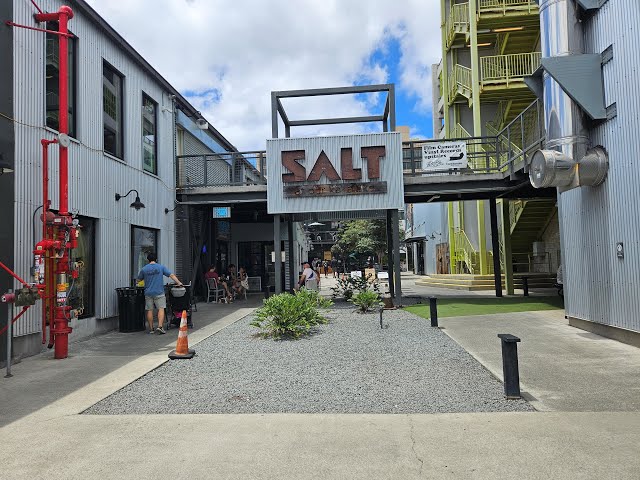
The development’s commitment to local ownership ensures that the businesses within SALT reflect authentic Hawaiian entrepreneurial spirit. This includes gallery spaces, artisan shops, and cultural venues that provide platforms for local artists to display and sell their work year-round.
Event space at SALT operates on a first come first serve basis, with registration available for upcoming events. This accessibility makes it possible for emerging artists and community organizations to host exhibitions and cultural programs.
Ola Ka ‘Ilima Artspace Lofts: Living Art Community
Ola ka ‘Ilima Artspace Lofts in Kakaako is an affordable-housing complex that is the first of its kind in Hawaii, with 84 units featuring 17,000 square feet of community and green space and 4,500 square feet of ground floor space reserved for the PAI Arts & Culture Center for Native Hawaiian dancers, musicians, visual artists, and cultural practitioners.
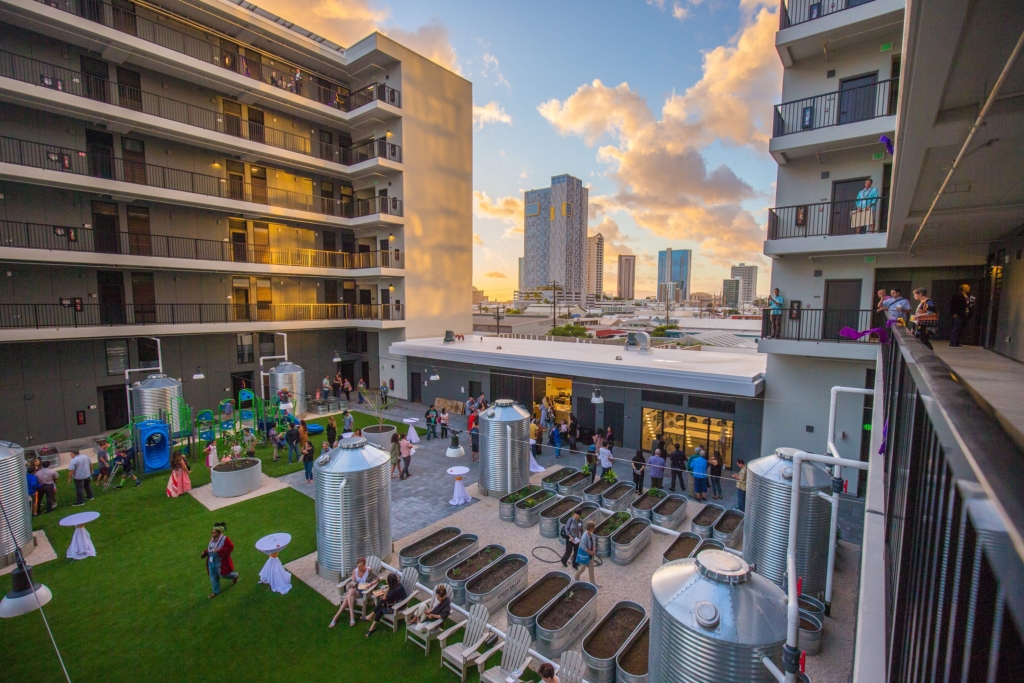
This innovative housing model creates a residential arts community within Kakaako, ensuring that artists can afford to live in the neighborhood they help create. The PAI Arts & Culture Center provides dedicated space for Native Hawaiian cultural practices, ensuring that the area’s artistic development remains grounded in indigenous cultural values.
The ground floor cultural center hosts regular workshops, performances, and exhibitions that are open to the broader community. This creates ongoing opportunities for cultural exchange and learning between residents and visitors.
Contemporary Gallery Spaces
Beyond SALT and the Artspace Lofts, Kakaako benefits from its proximity to downtown Honolulu’s established gallery district. Several smaller, independent galleries have opened in the neighborhood, taking advantage of the artistic energy and foot traffic generated by the mural tours.
These venues typically feature rotating exhibitions of contemporary Pacific art, photography, and mixed media works. Many focus specifically on Native Hawaiian and Pacific Islander artists, providing crucial exhibition opportunities for artists whose work might not find space in more traditional gallery settings.
Museum Connections
POW! WOW! Hawaii marks the first curated show at the Honolulu Museum of Art School, titled Pow! Wow! Exploring the New Contemporary Art Movement. This institutional recognition elevates street art from its traditional outsider status and creates bridges between community-based art making and formal cultural institutions.
Monthly Events and Community Programming
First Friday Art Walks: Downtown to Kakaako
The monthly First Friday gallery walks have become essential cultural events that connect downtown Honolulu’s traditional gallery district with Kakaako’s street art scene. These events typically run from 5:30 to 8 p.m. on the first Friday of each month, creating an evening of cultural exploration that can easily encompass both neighborhoods.
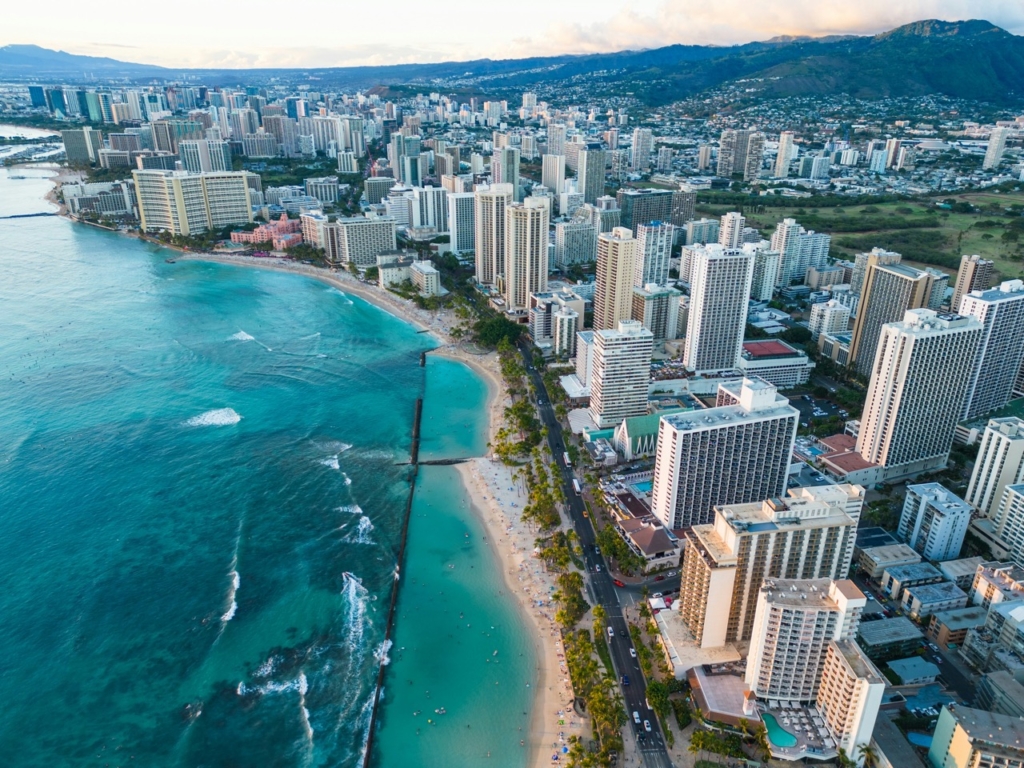
During First Friday events, many of the murals are specially lit, creating dramatic nighttime viewing experiences. Local restaurants and bars often coordinate with the art walks, offering special menus and extended hours to accommodate the increased foot traffic.
The walking route typically begins in downtown’s established gallery district, where venues like the Downtown Art Center maintain regular hours Tuesday through Sunday, 11 a.m. to 5 p.m., with special First Friday hours. From there, the route extends into Kakaako, where the outdoor murals provide a natural extension of the gallery experience.
Eat the Street: Food and Art Integration
The monthly Eat the Street food truck gatherings represent one of Kakaako’s most successful community events, combining culinary exploration with artistic appreciation. These events typically feature 20-30 food trucks arranged throughout the neighborhood, with live music, artist demonstrations, and family-friendly activities.
During Eat the Street events, many local artists set up pop-up exhibitions and sales booths, creating opportunities for direct interaction between artists and community members. This grassroots approach to art sales supports local artists while making art accessible to diverse economic communities.
The events also feature live mural painting demonstrations, allowing visitors to watch artists at work and understand the technical processes behind the large-scale artworks. These educational components help build appreciation for the skill and planning required for successful street art projects.
Seasonal Art Festivals and Special Events
Beyond the regular monthly programming, Kakaako hosts several seasonal events that celebrate different aspects of the artistic community. These might include:
Native Hawaiian Cultural Celebrations: Events that specifically honor Hawaiian cultural traditions through art, music, and dance, often coordinated with the PAI Arts & Culture Center.
Pacific Islander Heritage Festivals: Celebrations that highlight the broader Pacific Islander community’s artistic traditions and contemporary cultural expressions.
Contemporary Art Symposiums: Academic and professional events that bring together artists, curators, and cultural workers to discuss current issues in Pacific contemporary art.
Youth Art Programs: Regular workshops and exhibitions that provide opportunities for young people to engage with professional artists and develop their own creative skills.
2025 Updates and Current Developments
Hawaii Triennial 2025: A Major Cultural Event
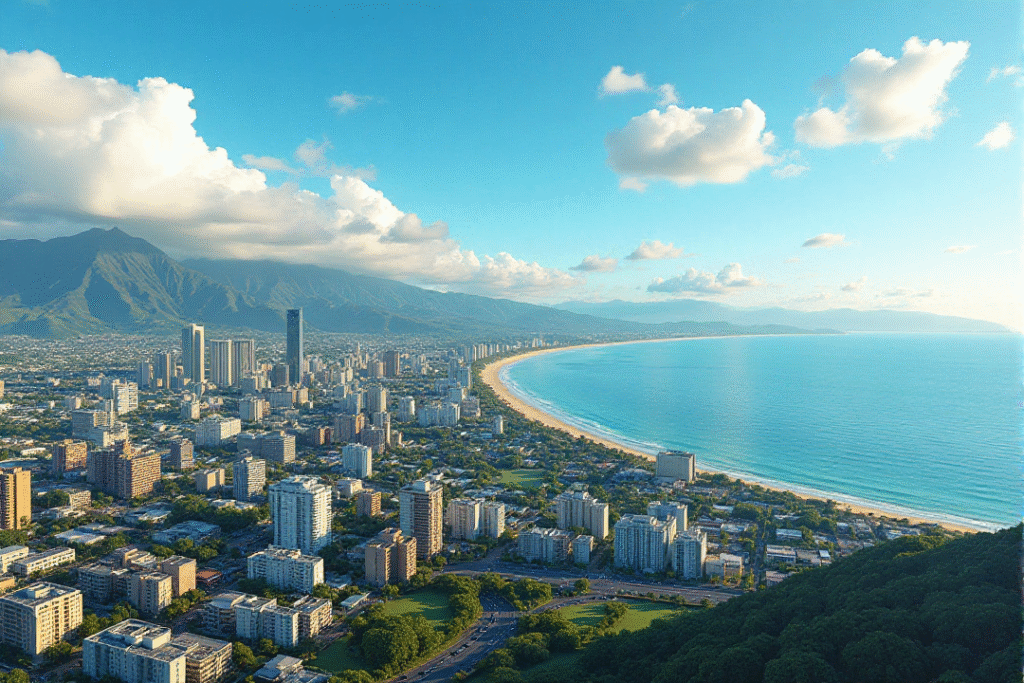
Hawai’i Triennial 2025 is the state’s largest, thematic exhibition of contemporary art from Hawai’i, the Pacific, and beyond our shores, on view for 78 days across collaborating sites of exhibition on O’ahu, Maui, and Hawai’i Island. This major exhibition runs from February 15 to May 4, 2025, and includes several Kakaako venues as participating sites.
As you enter the Hawai’i Triennial 2025 installation, you are met by Maui-based artist Al Lagunero’s painting Ka’aha’āinaokahaku—his mother’s story of his great-grandmother, showcasing traditional Native Hawaiian narratives through contemporary artistic expression.
The Triennial’s inclusion of Kakaako venues represents official recognition of the neighborhood’s importance to Hawaii’s contemporary art scene. This prestigious event brings international attention to local artists and cultural venues while providing unprecedented opportunities for cultural exchange and artistic dialogue.
Ongoing Infrastructure and Development
The neighborhood continues to evolve with new residential and commercial developments that incorporate public art requirements. Current zoning regulations mandate that new developments include public art components, ensuring that the artistic character of the neighborhood will be maintained even as it grows.
Recent infrastructure improvements include better lighting for evening mural viewing, expanded sidewalks to accommodate walking tours, and additional public seating areas that encourage lingering and community interaction.
Technology Integration
New developments in 2025 include augmented reality features that allow smartphone users to access additional information about murals, including artist interviews, time-lapse creation videos, and historical context about the locations. This technology enhancement makes the self-guided art walk experience more educational and engaging for visitors of all ages.
QR codes placed near major murals now link to curated playlists of music that the artists listened to while creating their works, creating multimedia experiences that deepen appreciation for the artistic process.
Planning Your Visit: Comprehensive Practical Information
Optimal Timing and Weather Considerations
The best time to explore Kakaako’s art scene is during the dry season (April through October) when you’re less likely to encounter rain during outdoor mural viewing. However, the neighborhood offers year-round artistic experiences, with indoor venues providing alternatives during occasional wet weather.
Morning hours (8-10 AM) offer excellent natural lighting for photography and fewer crowds, making it easier to appreciate the murals without obstruction. Late afternoon (4-6 PM) provides dramatic golden hour lighting that enhances the visual impact of the artworks.
Avoid midday visits during summer months (11 AM – 2 PM) when the heat and harsh lighting can make walking tours uncomfortable and reduce the visual quality of photographs.
Transportation and Parking Solutions
Public Transportation: The neighborhood is accessible via several TheBus routes, with stops near SALT at Our Kakaako providing convenient access to the main artistic areas. Routes 19, 20, and 42 provide regular service from various parts of Oahu.
Parking Options: Street parking is available throughout the neighborhood, with typical urban restrictions (2-hour limits in most areas). Several municipal parking lots offer all-day options:
- SALT Kakaako Parking Garage: 685 Auahi Street (validated parking available with merchant purchases)
- Municipal Lot on Coral Street: Hourly and daily rates available
- Street parking on Cooke, Halekauwila, and Waimanu Streets (check posted restrictions)
Alternative Transportation: The neighborhood is increasingly bike-friendly, with dedicated bike lanes on major streets and Biki bike-sharing stations located near SALT and other major destinations. Walking from downtown Honolulu takes approximately 15-20 minutes and provides opportunities to see additional murals along the route.
Self-Guided Tour Recommendations
The Essential Mural Walk (1-2 hours): Start at SALT Kakaako and work your way through the nine-block core area, focusing on the major commissioned murals. This route covers approximately 1.5 miles of walking and includes the most photographed and culturally significant artworks.
The Complete Cultural Experience (3-4 hours): Combine mural viewing with visits to gallery spaces, local restaurants, and cultural venues. This extended tour allows time for indoor exhibitions, shopping at local artist boutiques, and meal breaks at neighborhood restaurants.
The Photography Tour (2-3 hours): Timed for optimal lighting conditions, this tour focuses on the most visually striking murals and provides information about the best angles and techniques for capturing high-quality photographs.
Combining Art with Local Experiences
Dining Integration: Many local restaurants feature artwork by neighborhood artists, creating opportunities to support both culinary and visual arts simultaneously. Several establishments offer “art menu” dining experiences where meals are paired with information about local artists and their work.
Shopping for Local Art: Beyond viewing street murals, visitors can purchase original works, prints, and crafts from local artists at various boutiques throughout the neighborhood. Many artists maintain small studios or sales spaces in mixed-use buildings.
Cultural Learning Opportunities: The PAI Arts & Culture Center offers regular workshops in traditional Hawaiian arts, including kapa making, lei creation, and traditional dance. These hands-on experiences provide deeper cultural context for understanding the neighborhood’s artistic development.
The Cultural Impact and Community Benefits
Economic Development Through Arts
The artistic transformation of Kakaako has generated significant economic benefits for local artists, businesses, and property owners. The neighborhood’s reputation as an arts destination has increased property values while creating new revenue streams for local entrepreneurs.
Local artists benefit from increased visibility and sales opportunities, with many reporting that their involvement in Kakaako projects has led to commissions and exhibition opportunities throughout Hawaii and the Pacific region.
Educational and Social Benefits
The neighborhood’s transformation has created numerous educational opportunities, from formal school field trips to informal community learning experiences. Local schools regularly use Kakaako as an outdoor classroom for art education, Hawaiian history, and urban planning studies.
The accessible nature of street art makes cultural experiences available to community members who might not otherwise visit traditional museums or galleries. This democratization of cultural access has particular significance in Hawaii, where economic barriers can limit participation in formal cultural activities.
Cultural Preservation and Innovation
Rather than displacing Hawaiian culture, Kakaako’s artis
tic development has created new platforms for cultural expression and preservation. Many murals explicitly celebrate Hawaiian history, mythology, and contemporary cultural practices, ensuring that these traditions remain visible and relevant to younger generations.
The integration of traditional cultural practices with contemporary artistic expressions creates a model for cultural innovation that respects ancestral knowledge while embracing contemporary creativity.
Looking Forward: The Future of Kakaako’s Art Scene
Sustainable Development Goals
Community stakeholders continue working to balance urban development with cultural preservation and artistic expression. Current planning initiatives focus on ensuring that new developments contribute to rather than diminish the neighborhood’s artistic character.
Environmental sustainability has become an increasing focus, with artists and developers exploring eco-friendly paint options, solar-powered lighting for nighttime mural viewing, and green building practices that support rather than compete with artistic installations.
Educational Initiatives and Programs
Plans for 2025 and beyond include expanded educational programming, potentially including a permanent cultural center that would provide year-round workshops, artist residencies, and educational programs for all ages.
Partnership discussions with the University of Hawaii system could lead to formal academic programs in community-based art, cultural preservation, and sustainable urban development, using Kakaako as a living laboratory for students and researchers.
Technology and Innovation
Future developments may include interactive mural experiences, virtual reality components that allow deeper exploration of artistic themes, and mobile applications that provide multilingual interpretation services for international visitors.
Digital archiving projects aim to document the evolution of individual murals over time, creating historical records that will be valuable for future researchers and community members interested in understanding the neighborhood’s artistic development.
Community Ownership and Participation
Ongoing efforts focus on ensuring that long-time community members remain involved in decision-making about the neighborhood’s artistic future. Community advisory councils include representatives from Native Hawaiian cultural organizations, local business owners, artists, and residents.
These governance structures help ensure that future development serves community needs while maintaining the cultural authenticity that makes Kakaako unique among urban arts districts.
Conclusion: A Living Model of Cultural Urban Development
Kakaako represents more than just a successful arts district; it demonstrates how thoughtful community planning can create spaces that honor cultural heritage while embracing contemporary creativity. The neighborhood’s combination of accessible public art, professional cultural venues, and regular community events creates a vibrant ecosystem that serves both residents and visitors.
The area’s continued evolution ensures that each visit offers new discoveries, whether through fresh murals, emerging artists, or innovative community programming. For residents, Kakaako provides not just visual beauty but also cultural pride, economic opportunity, and community connection.
The success of Kakaako’s transformation offers valuable lessons for other communities seeking to balance development with cultural preservation. The neighborhood’s commitment to authentic community voices, cultural responsibility, and artistic excellence has created a sustainable model that continues to evolve while maintaining its core values.
Whether you’re interested in Instagram-worthy photography, serious contemporary art appreciation, cultural education, or simply enjoying beautiful public spaces, Kakaako offers diverse opportunities to engage with Hawaii’s dynamic artistic landscape. The district’s regular programming ensures that there’s always something new to discover, making it a neighborhood that rewards both casual exploration and deeper cultural engagement.
For anyone interested in understanding how art can transform communities while honoring cultural traditions, Kakaako stands as a premier example of what’s possible when artistic vision combines with community commitment and cultural respect. As the neighborhood continues to evolve, it remains firmly grounded in the values that made its transformation successful: authenticity, inclusivity, and deep respect for the land and people of Hawaii.
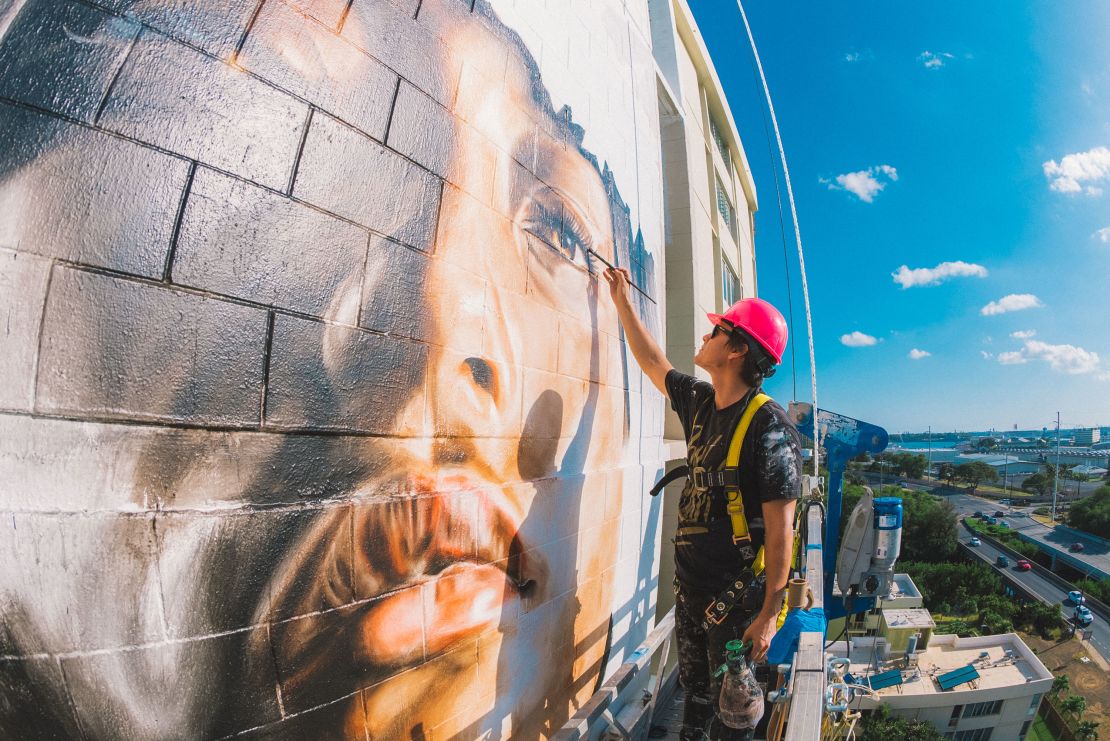
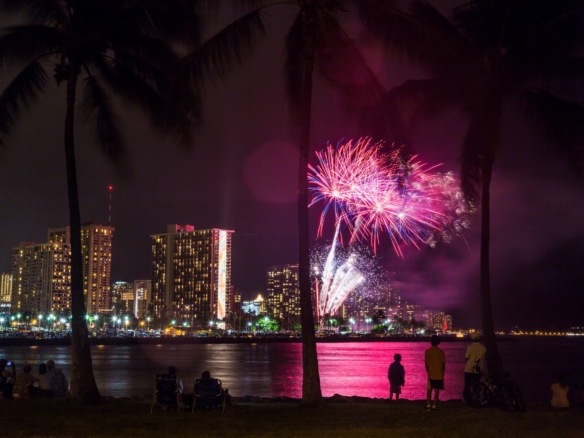
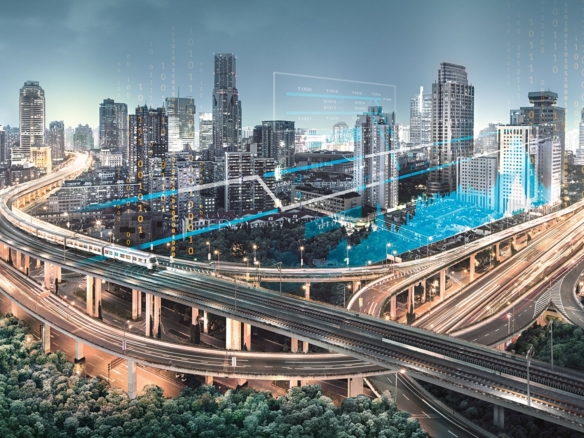


Join The Discussion